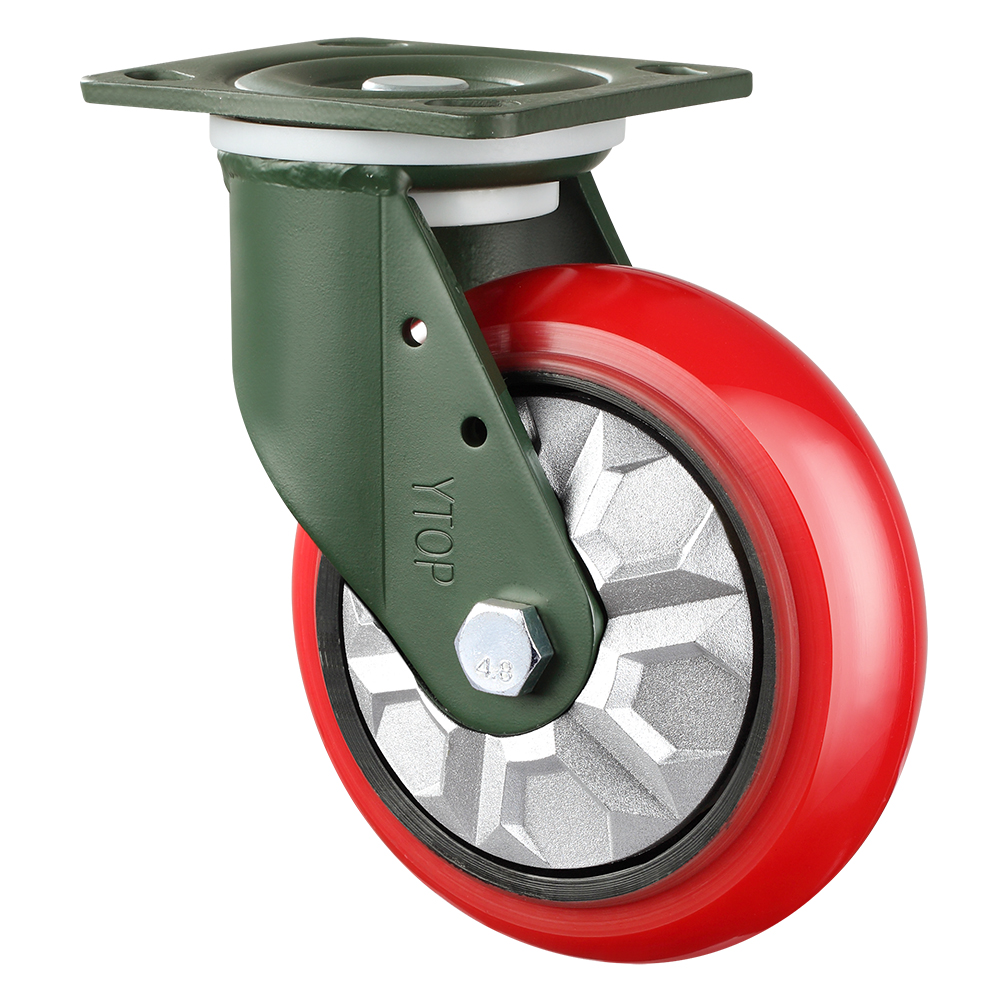Polyurethane (PU), the full name of polyurethane, is a polymer compound, which was produced in 1937 by Otto Bayer and others. Polyurethane has two main categories: polyester and polyether. They can be made into polyurethane plastics (mainly foam), polyurethane fibers (known as spandex in China), polyurethane rubber and elastomers. Polyurethane is a polymer material that is ideal for use as a wheel cover in the manufacture of industrial casters.
The main advantages of polyurethane casters are mainly as follows:
First, the performance of the adjustable range
A number of physical and mechanical performance indicators can be adjusted through the selection of raw materials and formulas, within a certain range of flexible changes, so as to meet the user’s unique requirements for product performance.
Second, superior abrasion resistance
In the presence of water, oil and other wetting media working conditions, polyurethane casters wear resistance is often several times to dozens of times the ordinary rubber materials. Metal materials such as steel and other hard, but not necessarily wear-resistant!
Third, processing methods, wide applicability
Polyurethane elastomers can be molded with general-purpose rubber by plasticizing, mixing and vulcanizing (MPU); they can also be made into liquid rubber, pouring and molding or spraying, sealing and centrifugal molding (CPU); they can also be made into granular materials and ordinary plastics by injection, extrusion, calendering, blow molding and other processes (CPU). Molded or injection molded parts, within a certain hardness range, can also be cut, grinding, drilling and other mechanical processing.
Fourth, oil resistance, ozone resistance, aging resistance, radiation resistance, low temperature resistance, good sound transmission, strong adhesive force, excellent biocompatibility and blood compatibility. These advantages are precisely the reason why polyurethane elastomers are widely used in military, aerospace, acoustics, biology and other fields.
Post time: Oct-30-2023

